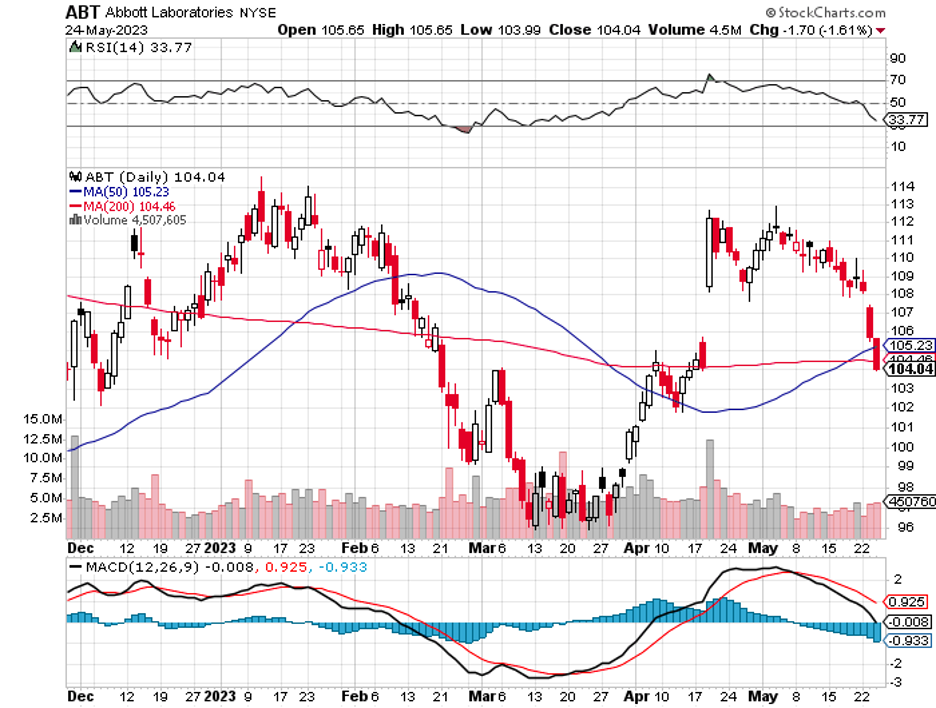In 2017, Abbott Laboratories (ABT) emerged as one of the prime examples of quality deserving a price.
Back then, Abbott was demonstrating solid organic growth, achieving success with new product approvals, and reaping the rewards of strategic acquisitions.
The company excelled at capital allocation and managed a diverse range of operations, successfully avoiding the conglomerate discount.
During that period, Abbott was also engaged in reshuffling its portfolio. It had recently completed the acquisition of Alere, shortly after sealing the deal for St. Jude Medical, a cardiovascular device manufacturer, in a substantial $30 billion transaction. These moves were partially offset by smaller divestments.
With the impact of the St. Jude deal evident in the 2017 results, Abbott was on track to achieve $28 billion in sales.
The medical device segment, bolstered by the St. Jude Medical acquisition, led the way with $10 billion in revenue.
Additionally, Abbott boasted a $7 billion nutrition business, a $5 billion diagnostics business, and a nearly equal-sized pharmaceutical business, forming a comprehensive and robust enterprise.
In 2022 alone, Abbott raked in $43.7 billion in sales, reaping a net income of $6.9 billion. The company's product offerings span an array of diagnostic tests, surgical tools, medical nutrition products, and even medical devices like glucose monitors.
With consistent demand for these essential goods year after year, Abbott has witnessed slow but steady growth as the healthcare sector expands. Over the past decade, its annual free cash flow (FCF) has averaged a commendable 11.5% growth, culminating in a remarkable $7.8 billion in FCF for 2022.
Now, Abbott is turning its sights into something else.
The company, eager to outpace its rivals in the leadless pacemaker race, is aiming for a groundbreaking achievement: FDA approval for a dual-chamber version of its innovative technology.
While Medtronic (MDT) took the lead in 2016, Abbott is now surging ahead and recently submitted its trial results to the FDA for approval.
Unlike traditional pacemakers, Abbott’s miniaturized leadless versions are implanted directly into the heart, emitting electrical pulses to maintain a steady rhythm.
Abbott's Aveir DR system, smaller than a AAA battery, is placed using a minimally invasive, catheter-based procedure.
What makes Abbott's technology truly unique is its dual-chamber approach. While existing leadless pacemakers are single-chambered, Abbott's Aveir DR system utilizes two pacemakers implanted in the right ventricle and right atrium. These pacemakers work harmoniously through Abbott's wireless implant-to-implant (i2i) technology, delivering synchronized stimulation beat by beat to the heart's specific sections.
Abbott's Aveir DR system has showcased remarkable success in the study, meeting all safety and efficacy endpoints.
With over 98% successful implants and a complication-free threshold reached after three months, the system has proven its safety.
On the efficacy front, more than 97% of participants achieved atrioventricular synchrony within the study period, indicating normal functioning of both upper and lower heart chambers.
Even as participants changed postures and walking speeds, the system maintained a synchrony rate of around 95%, ensuring consistent performance during everyday activities.
Abbott's relentless pursuit of a dual-chamber leadless pacemaker sets it apart in the industry, pushing the boundaries of cardiac technology and paving the way for an exciting future in pacemaker advancements.
Overall, Abbott stands out as a rock-solid investment, and part of its appeal lies in the indispensability of its products to many customers.
Think about it—without Abbott's stents, operating rooms would grind to a halt. That's the kind of recurring revenue that instills confidence in its stability and longevity.
Moreover, Abbott has built a reputation for consistently rewarding its shareholders.
Considering the company's robust growth in free cash flow, it's reasonable to expect that Abbott will continue its upward trajectory. This, coupled with its steady earnings growth, positions it as an exceptional long-term stock for any investor's portfolio.

